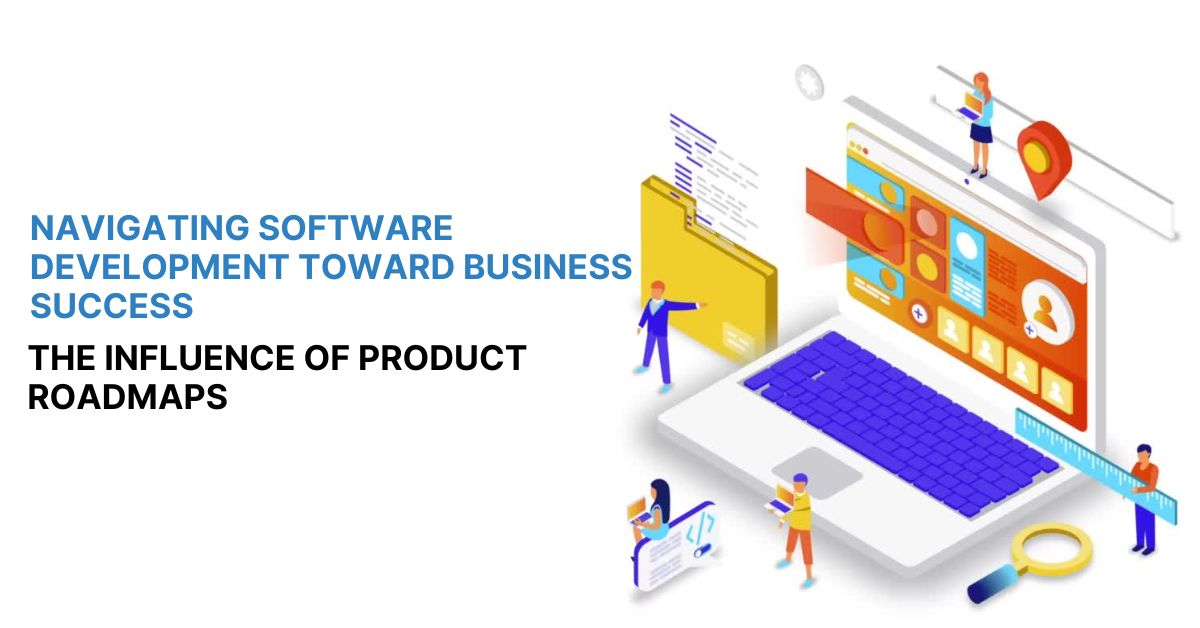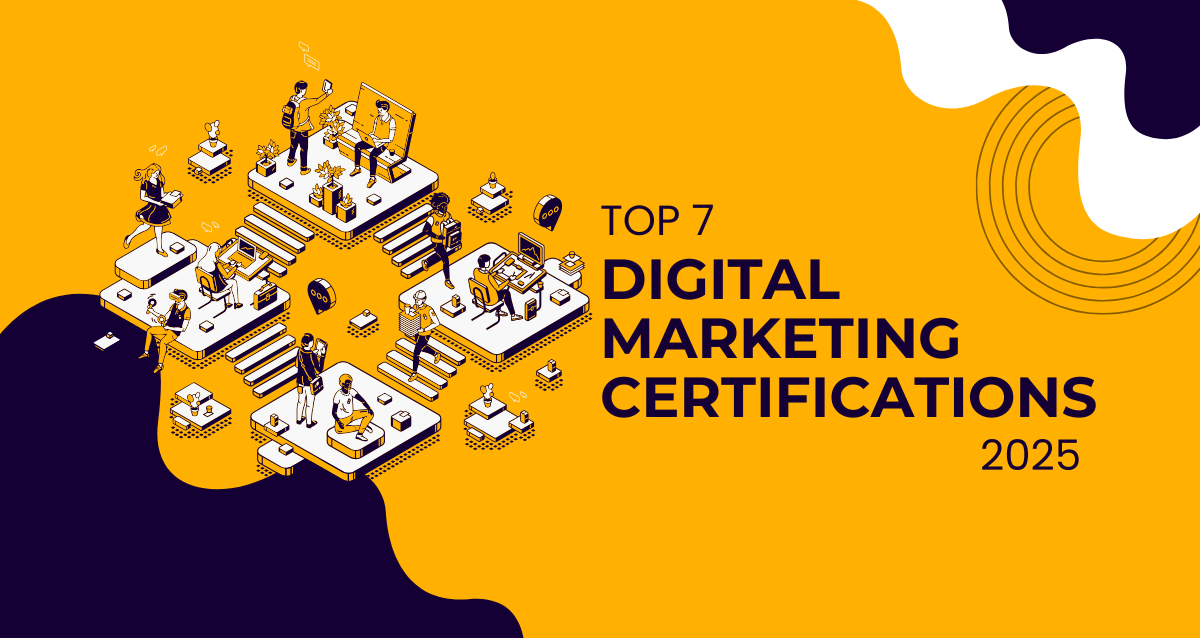
 1-Aug-2024
1-Aug-2024
Software development frequently experiences budget overruns, missed deadlines, and products that fall short of expectations. The culprit? Often, it’s a lack of strategic planning and clear direction. Crafting a well-structured product roadmap can transform this situation.
This comprehensive guide will lead you through the critical steps of constructing a roadmap that aligns your software development efforts with your core business objectives. We’ll cover everything from defining your Minimum Viable Product (MVP) to navigating common challenges and leveraging the appropriate tools. Discover how to create a roadmap that fosters innovation, accelerates growth, and ensures your software projects deliver tangible value to your business.

A product roadmap serves as a framework for a software product’s vision. It outlines the steps and direction required to transform a software idea into a fully functional product. Beyond defining the development purpose, it aligns with business goals and market demands. Moreover, it sets priorities, clarifying which features are essential and which can be deferred for future iterations. Ultimately, a product roadmap unifies the entire product team—designers, developers, and business stakeholders—around the same goal. Like sheet music, it outlines the precise timing and actions necessary to create something beautiful—in this case, a piece of software.
Without a clear roadmap, you risk wasting time and resources or missing market opportunities. Confusion can lead to teams building features or functionalities that don’t advance the business or benefit users. This is where a product roadmap becomes invaluable.
Creating product roadmaps maximizes your software’s return on investment (ROI). As the saying goes, it’s much easier to hit your target when you aim before you shoot. Strategic road mapping aligns your efforts with the same business goals and outlines how, when, and why each project should proceed. Moreover, a clear software roadmap serves as an excellent tool for gaining executive buy-in, which significantly impacts the success of your project.
While each project exhibits differences, successful strategic software roadmaps incorporate these key elements. Regardless of your industry or desired outcomes, ensure that your product roadmap includes the following components:
Business Goals & KPIs: Root the roadmap in core business objectives to ensure that every feature developed aligns with company goals. A visually appealing app won’t outpace competitors if its functionalities don’t contribute to broader business objectives. To measure project success, use Key Performance Indicators (KPIs) such as saved time, prospective customers, or user base size. The right KPIs depend on your specific business goals and industry.
Target Audience: When constructing your software roadmap, discard assumptions and rely on your target audience’s genuine wants and needs. Understanding the intended users, their pain points, and desired outcomes is critical for success. This knowledge guides feature prioritization, ensuring that the product effectively meets user needs. Tailored software encourages adoption and sustained usage.
Prioritized Features: Avoid the over-engineering trap by establishing a clear feature priority list. Frameworks like MoSCoW (Must have, Should have, Could have, Won’t have) help prioritize features based on their impact on achieving business goals. Ranking features efficiently allocates resources, focusing on high-value items first.
MVP Definition: An effective product roadmap includes a clear definition of the Minimum Viable Product (MVP). While additional features may be added later, the MVP focuses solely on the core functionality necessary to gather initial feedback. This iterative approach helps define the product based on real-world usage.
Timeline & Milestones: A realistic timeline with well-defined milestones ensures accountability and allows stakeholders to track progress effectively. This transparency is crucial for managing expectations and making necessary adjustments throughout the development process.
Software Roadmap Examples: Creating product roadmaps is a creative process, and they can take various forms. Some common formats include the timeline, swimlane, and Kanban, among others. The most effective approach often depends on project needs.
Timeline Roadmap: As the name suggests, the timeline roadmap format links specific project steps to dates on the calendar. Features and phases’ due dates are visible at a glance, keeping the entire team on schedule. Gantt charts are a popular type of timeline roadmap used in manufacturing, technology, and other industries.
Kanban Roadmap: Unlike the timeline format, which organizes items based on dates, the Kanban format uses “buckets” to group similar tasks. Common delineations include “to do,” “doing,” and “done,” or similar categories. Small- to mid-sized teams that move quickly are often best suited to the Kanban format.
Swimlane Roadmap: Think of the swimlane roadmap as a hybrid format between the timeline and Kanban roadmaps. It typically combines an element of time or status with categories of tasks. This type of product roadmap can be helpful for teams and projects with several moving parts and pieces.
Are you ready to dive in and create your own software roadmap? Let’s get started! Here’s what you need to know:
Define Your Goals: Gather your stakeholders and establish the business targets you aim to achieve with your software product.
Brainstorm Relevant Features: Take some time to list out your dream product features, including everything from essential to nice-to-have elements.
Prioritize Key Features: Order your features to clearly identify the highest-priority ones. Consider using a framework like MoSCoW (Must-have, Should-have, Could-have, Won’t-have) for effective prioritization.
Define Your MVP (Minimum Viable Product): Determine which features and functionalities belong in your MVP. Save other features for future iterations of your product.
Establish a Project Timeline: With a clear vision and path forward, assign deadlines and estimated completion times for each phase. Sequencing steps efficiently will help orchestrate resources effectively.
Popular roadmap software, such as Product Plan and Aha!, simplifies the process of creating and managing roadmaps. These tools offer templates and collaboration features to streamline development. Our team prefers Figma for creating roadmap visuals, while Jira serves as the gold standard for agile software teams development management.
While roadmap software can be helpful, having a team that knows how to utilize it effectively makes it even more powerful. Partnering with an experienced software developer allows you to leverage tools like these and others efficiently.
Common Challenges & Best Practices
Maintaining flexibility helps you avoid common challenges, such as scope creep or changing market dynamics. Regular reviews and updates to the roadmap, based on feedback and data insights, are best practices. A nimble, dynamic approach responsive to inputs leads to the best outcomes.
At Learning 360 Bytes, our clients can attest that creating robust software roadmaps lies at the heart of our approach. Our company meticulously defines success criteria for each project and outlines a systematic process to achieve those goals.
Our company comprises two parallel tracks: Product Definition and UX/UI Design. This process unfolds through four product definition workshops and four design review meetings. We kick off with a discovery phase, working closely with key business stakeholders to deeply understand the business context. By the end of these sessions, we compile a list of pain points and software requirements. Collaboration is key—our team provides a seasoned perspective on technological feasibility, while the client team contributes industry expertise.
Ultimately, our process yields a clear vision of software goals, a solid grasp of the target audience, a prioritized feature list, an MVP definition, and a roadmap ready for Jira.
Technology Expertise
Our mastery of tools like Figma and Jira empowers us to deliver efficient, effective product roadmaps and drive innovation in software development. We specialize in building enterprise technology and mobile applications across various industries. With our finger on the pulse of software trends, we serve as trusted experts for our clients, advising on technologies, platforms, and features to meet evolving market demands.
Iterative Development & Feedback Loops
Our development approach embraces agility right from the outset. We recognize that the most effective software products remain adaptable to change—whether driven by user feedback, market shifts, or technological advancements. That’s why we intentionally build room for iteration into our work process and every product roadmap we create.
Data-Driven Decision Making
Leveraging analytics and user data empowers us to make informed decisions throughout the roadmap process. We rely on data to optimize every product we build for sustained success. Rather than relying solely on assumptions and team preferences, we turn to data to guide critical choices about the product.
While hiring a great development team is crucial, the work that occurs before writing a single line of code is paramount to success. Partnering for your software roadmap could be the best decision you make for your software product because the roadmap process lays essential groundwork for future success. Let’s explore a few ways a partner can enhance your product roadmap:
Strategic vs. Tactical: In-house roadmap creation often focuses on the “what” and “when.” While important, these aspects are more tactical than strategic. An external partner can act as a business consultant, challenging assumptions and defining goals to shape and clarify the entire product. They can reveal strategic opportunities you might not have considered internally.
Specialized Expertise: Our team combines deep product strategy expertise with robust software development capabilities, ensuring a well-rounded approach to roadmap execution and delivery. Having worked with numerous firms across industries, we have valuable insights into what’s available. Our technical expertise helps clients avoid unforeseen setbacks and challenges.
Focus and Accountability: A software development project can divert resources from other critical business areas. Partnering allows enterprises to stay focused on core operations while ensuring roadmap execution. With a dedicated team working on the project roadmap, clients often achieve accelerated time-to-market and superior product outcomes.
Misaligned software development can incur significant costs and have detrimental effects. A well-crafted product roadmap acts as a blueprint for success, aligning development efforts with business objectives to drive innovation and maintain a competitive edge in the market. By having a strategic product roadmap, you’ll be well-prepared to navigate complexities, optimize resources, and achieve sustainable growth.
Map out your journey to software success. Arrange a free consultation with our experienced team. We’re excited to demonstrate how our strategic roadmap approach can transform your ideas into impactful solutions that resonate with your audience and propel your business to new heights.


19-Sep-2025


9-Sep-2025


14-Aug-2025